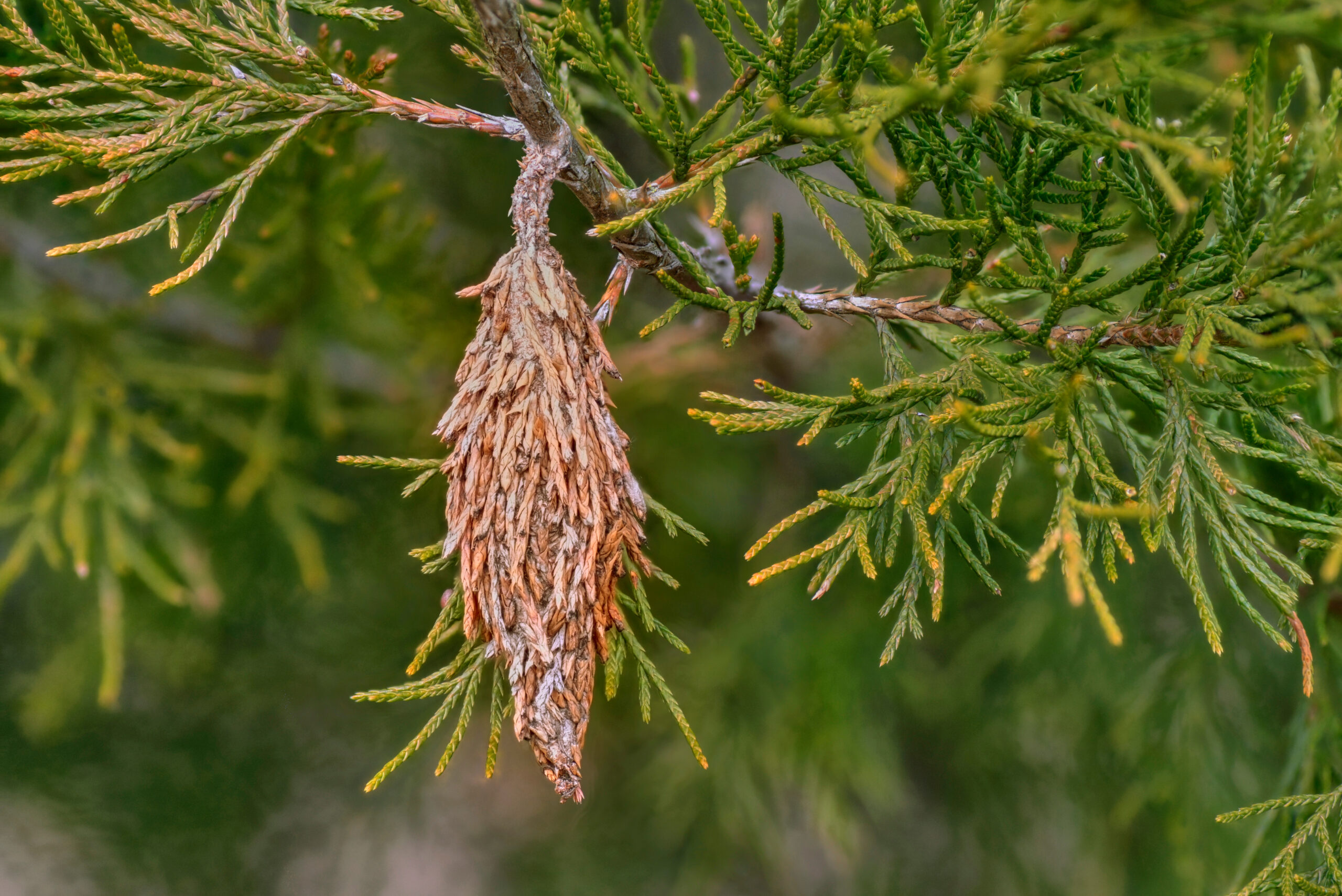In a world full of strange creatures, there is no shortage of creepy-crawlies to study. The ones with strange habits or scary appearances stand out the most, with one of the most interesting Texas pests being the bagworm. This creative critter is responsible for those odd pinecone-looking bags that protect them during their molting process.
Bagworms are set to hatch later this spring, so it’s a good idea to learn more about their interesting habits before the pests make their grand appearance. Let’s discuss the complex lives of bagworms and how they ruin our trees in a surprisingly short amount of time.
Bagworm Basics
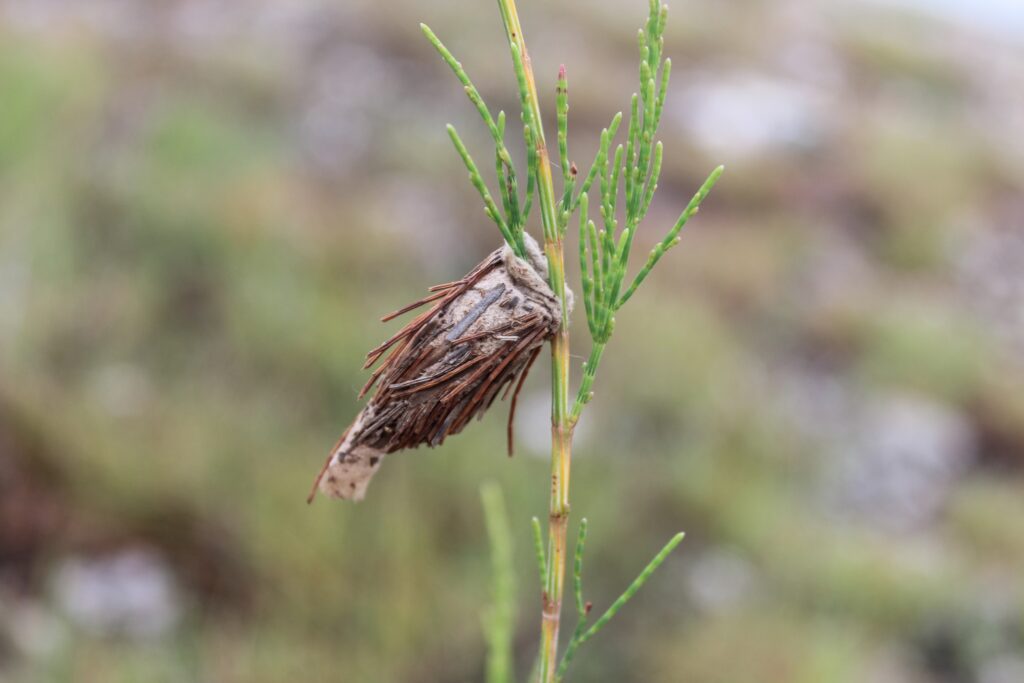
Bagworms seem like one of those pests that we see all the time and don’t know anything about — unless you’re a fan of the popular video game Animal Crossing™: New Horizons. These pests are essentially just caterpillars that make their own bags (as cocoons) during their larval stage.
Female bagworms lay their eggs inside a full-size bag, and those eggs hatch in late spring after overwintering within the bag. The caterpillars are just 1/25 of an inch long and are therefore easy to miss. They create their own little bags and use their silk to travel to either new branches of the same host plant or an entirely different tree.
As the caterpillar grows — up to 1 inch long — their bag does as well. In fact, the bag visibly gets larger every time the bagworm molts! The insect feeds thorough an opening in the top (more on that later) and expels their waste through a small hole in the bottom of the bag. Bagworms stop feeding during late summer, when the males and females search for mates.
Male bagworms look like small moths since they have black bodies and wings that are half an inch long. They fly around their habitat in search of females that produce the “mating” pheromone. Female bagworms are much different since they look like grubs, what with their lack of eyes and maggot-like bodies. Females lay anywhere from 500 to 1,000 eggs in the bag before dying soon after.
The Famous Bag
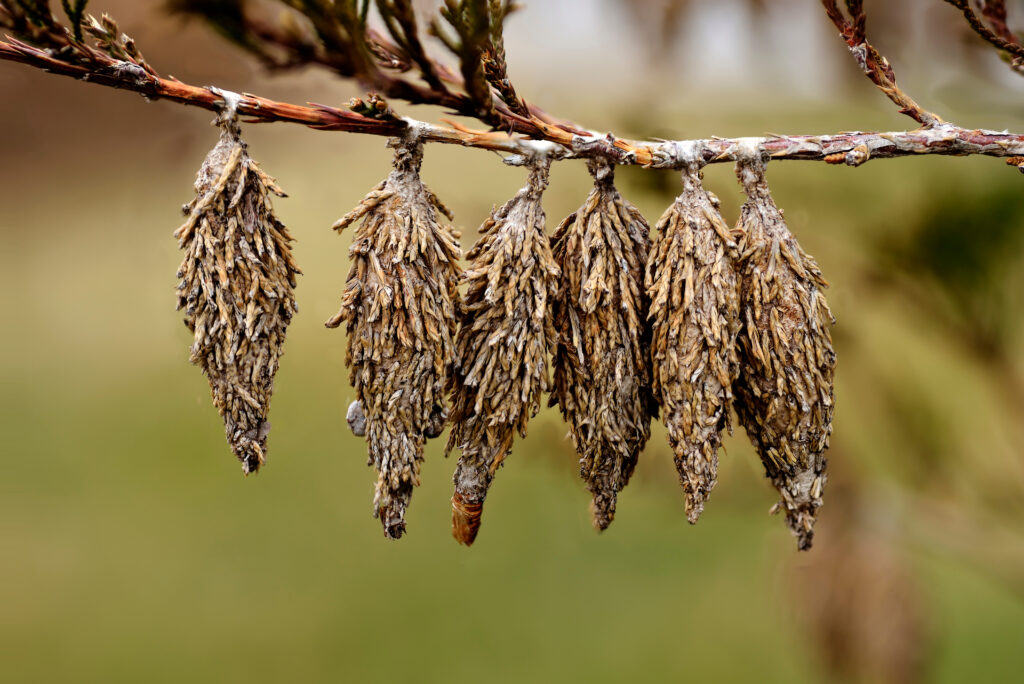
All this talk about bagworms and their titular bags leads us straight to the question of what those bags even are. Simply put, the bag is like the bagworm’s version of a butterfly’s chrysalis. The main difference is that bagworms live nearly their entire lives out inside the bag, not just their younger stages. The bag can get up to 2 inches long and look like a diamond-shaped pinecone at its full size.
Its specific appearance varies with the materials used to create it, but the bag is usually made of:
- Leaves
- Twigs
- Bark
- Pine needles
- Berries
- Plant debris
The bagworm weaves these materials into a shingle pattern, using whatever they can find on their host plant. Bagworms live on many types of trees and ornamental plants, but their favorites seem to be evergreen trees. It’s common to see bagworm caterpillars in the spring and summer as they crawl around their habitat in search of food and bag materials.
Distribution Factors
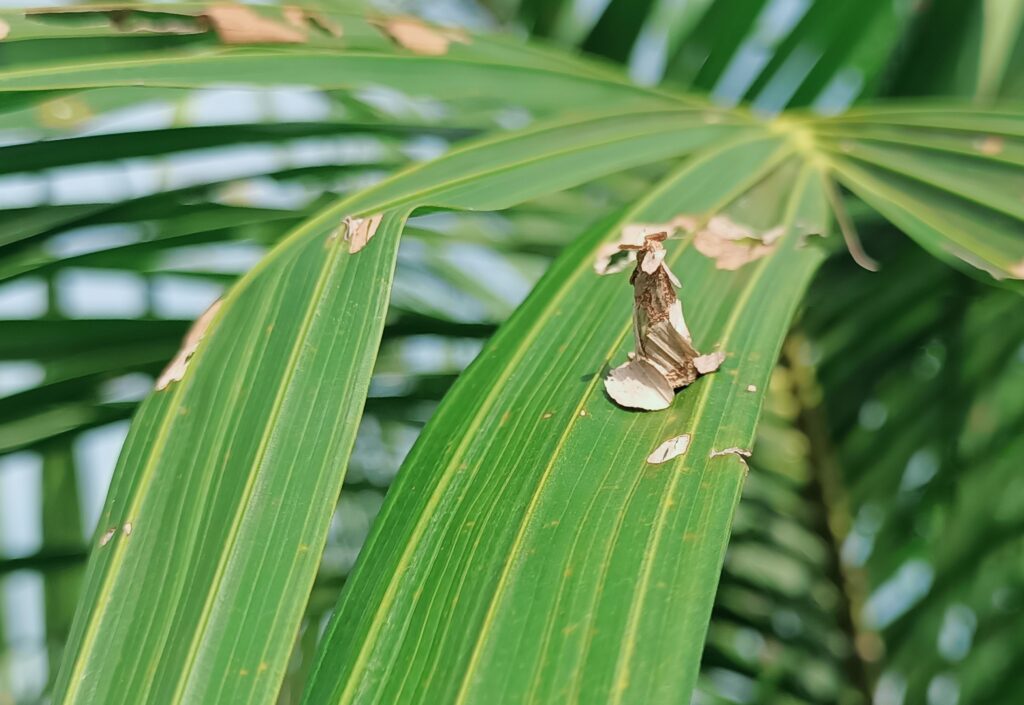
Since bagworms crawl around while carrying their own bags, how in the world can they spread from one plant to the next? It all has to do with their environment and surrounding species. For instance, there are actually quite a few ways that they’re distributed among Texas trees and plants.
Some of the frequent ways that bagworms travel from one tree to another are:
- Making silk that catches the wind and blows them to other places (like spiders do)
- Being carried away by a bird who wants to eat them or use their bag as nest material
- Crawling onto an adjacent branch while carrying their new bag the whole time
- Being carried by a human from one area to another (usually unknowingly)
Bagworms aren’t dangerous to people since they don’t bite us or spread diseases. That being said, they’re definitely a worrisome plant pest due to the surprising amount of damage they deal to a wide variety of plant species.
Caterpillar Food
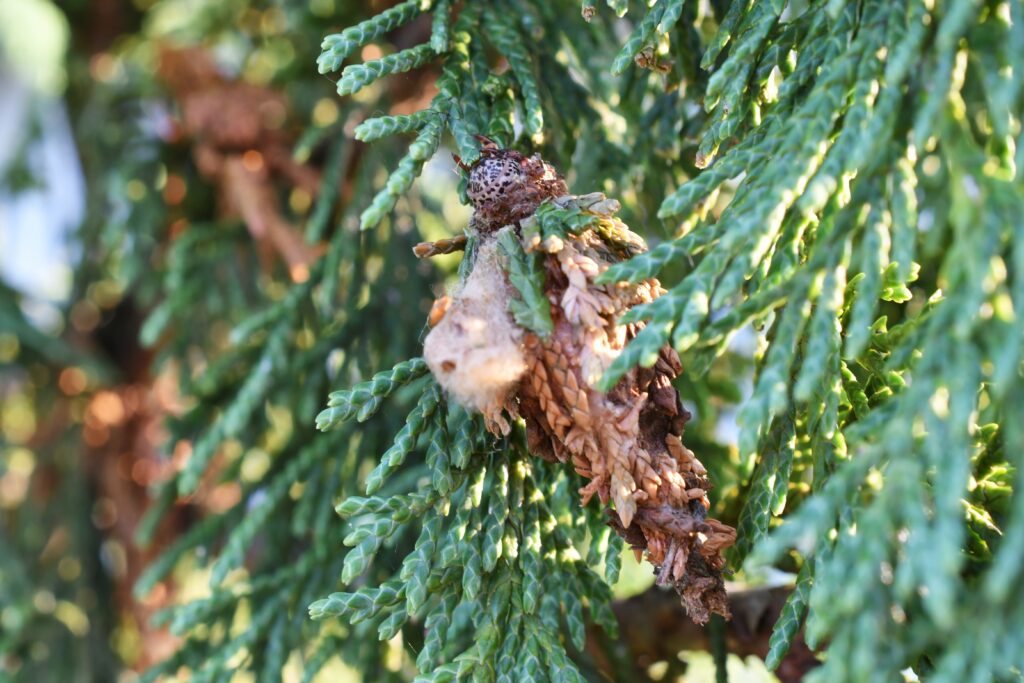
When we talk about garden pests, we often focus on the usual suspects: aphids, caterpillars, Japanese beetles, slugs, and so on. But bagworms are actually one of the most destructive plant pests when we look at the long-term damage they do with their diets. They can chew through plants because they have the typical mouthparts of caterpillars. When they want to feed, bagworms come out from the top of their bags and attach themselves to their desired leaves. They use either their legs or silk to securely adhere to their newfound food.
Since bagworms eat just about every part of the leaf, they cause lasting damage to any plant they infest. Bagworms often devour the outer cell layers, veins, and tissues of leaves. If a tree or plant is infested with bagworms, it will gradually become weaker the more that these pests feed. The plant becomes more susceptible to disease as it’s defoliated, and can eventually die altogether if the pests aren’t controlled. If you start seeing pinecone-shaped objects on your trees and plants, it’s important to take measures against the bagworms — before it’s too late.
Preventing These Pests

The good news about bagworms is that they are naturally controlled through the food chain. Birds and carnivorous insects feast on these pests throughout the warmer months, and can greatly reduce the bagworm population in a small area. However, the bad news is that it’s crucial to treat bagworms before they reach the larvae stage. This is when they crawl around and start expanding their bags with each molt. Bagworms are frustratingly resistant to insecticides at this stage, so elimination will be a lot tougher than you may think.
Honestly, the easiest way to eliminate bagworms is to simply pick them off your plants and trees whenever you see them. The bags may look like they are permanently attached, but they are easily plucked off by hand. After you pick a bagworm off the plant, make sure it’s dead and dispose of it in the place you usually put your yard waste. If you just throw it on the ground near the plant, the live bagworm will re-infest the plant!
Guard Your Yard With Romney!
The warmer temperatures of spring give pests more energy, which is why this time of year is filled with frustrating pest activity. The licensed technicians of Romney Pest Control are dedicated to solving Texas pest issues as efficiently as possible. We do not cut corners in our treatments, as we know the importance of eliminating pest infestations before they can grow any larger. We look forward to protecting your home from troublesome pests, so contact us today for more information on our targeted treatments!
Citations
Bagworm. (2021, November). Iowa State University. Retrieved March 27, 2024, from https://yardandgarden.extension.iastate.edu/encyclopedia/bagworm
Bagworm. (n.d.). Texas A&M AgriLife Extension. Retrieved March 27, 2024, from https://texasinsects.tamu.edu/lepidoptera/bagworm/
Bagworm. (2011). U.S. Forest Service. Retrieved March 27, 2024, from https://www.fs.usda.gov/Internet/FSE_DOCUMENTS/stelprdb5347210.pdf
Drees, B.M. (n.d.). Bagworms. Texas A&M AgriLife Extension: Landscape IPM. Available at https://landscapeipm.tamu.edu/ipm-for-ornamentals/bagworms/ (Accessed on March 27, 2024).
Larson, J.L. (n.d.). Dealing with bagworms on landscape plants. University of Kentucky: Department of Entomology. Available at https://entomology.ca.uky.edu/ef440 (Accessed March 27, 2024).

